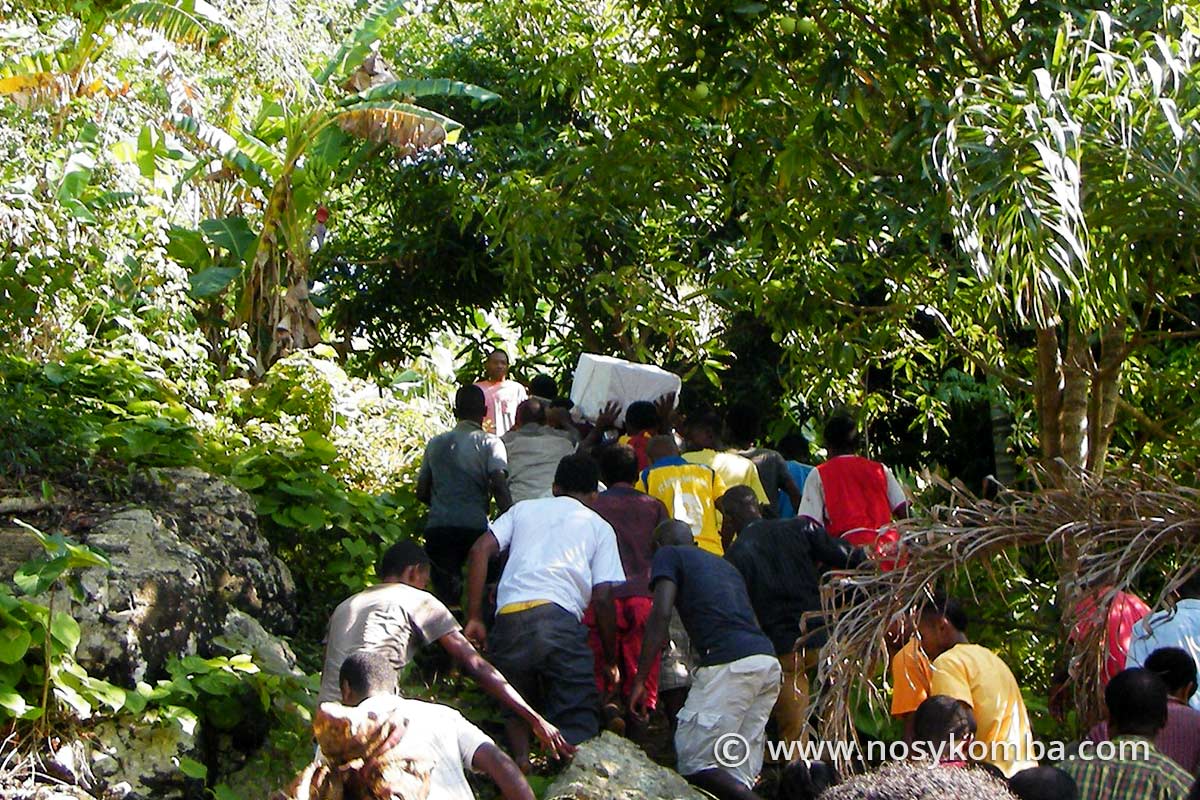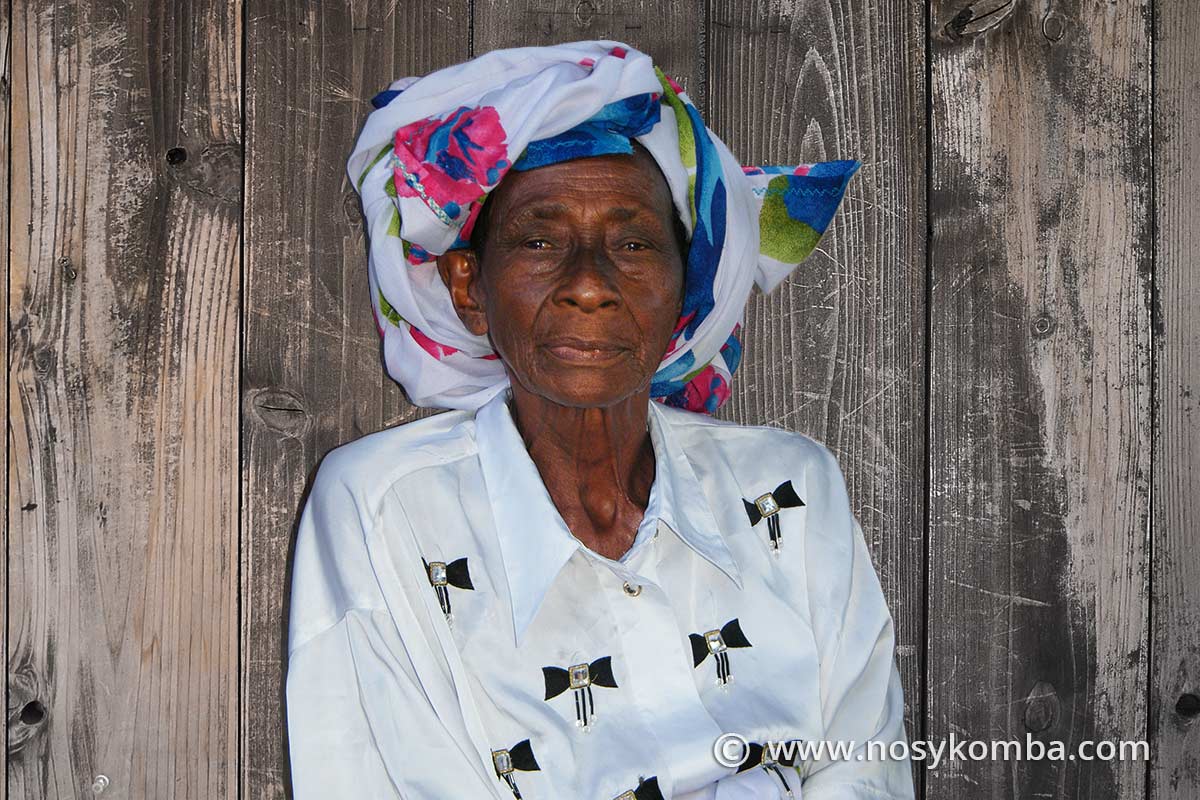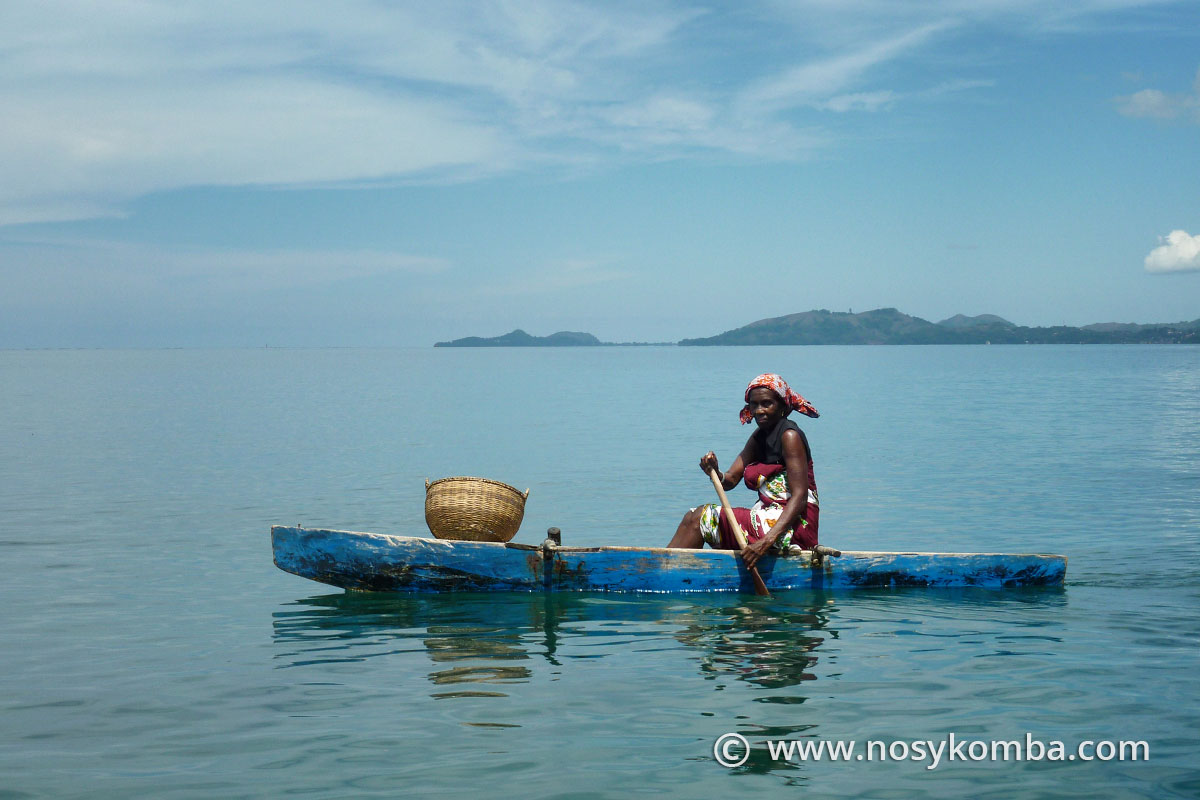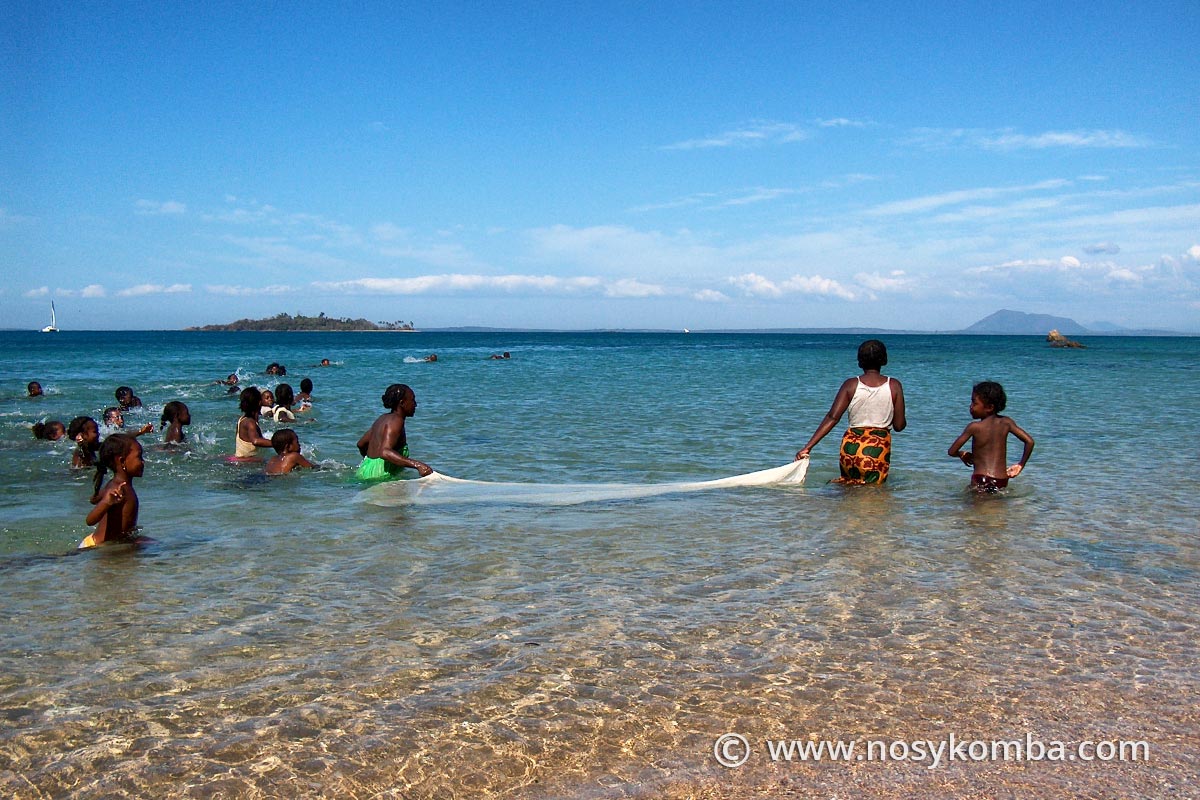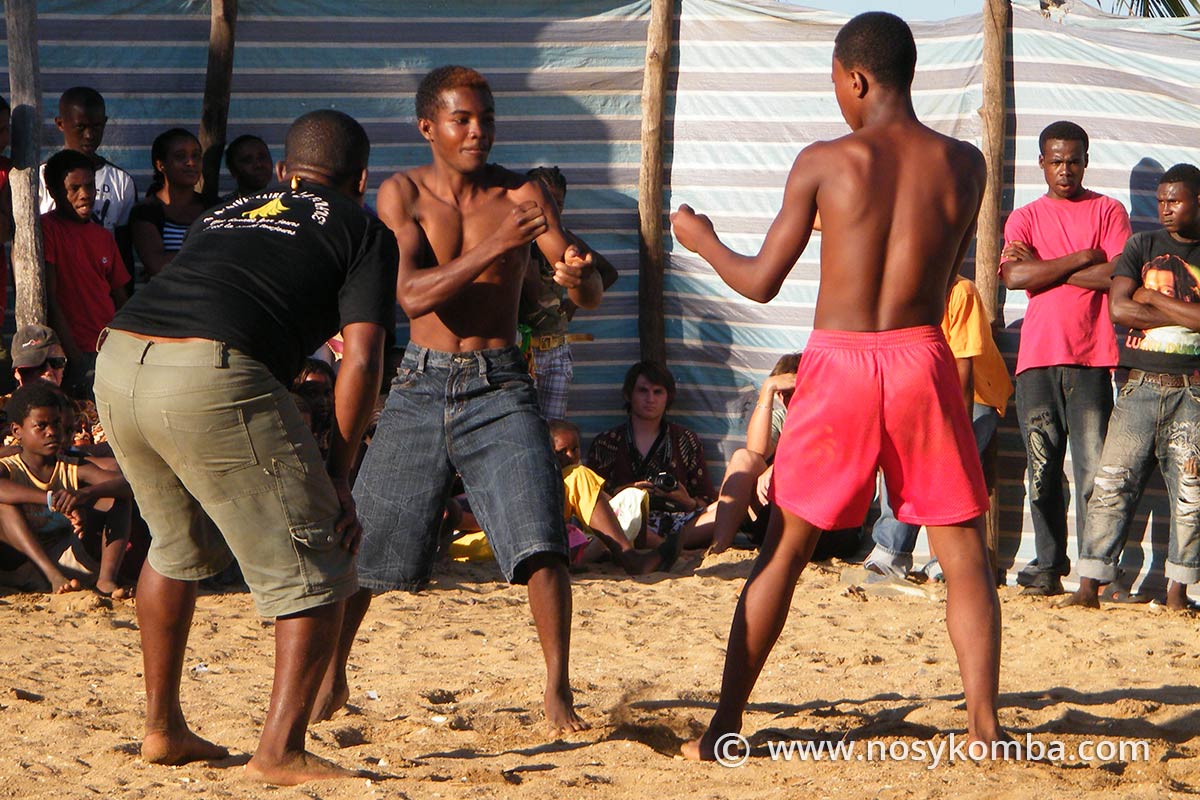Kings and Queens
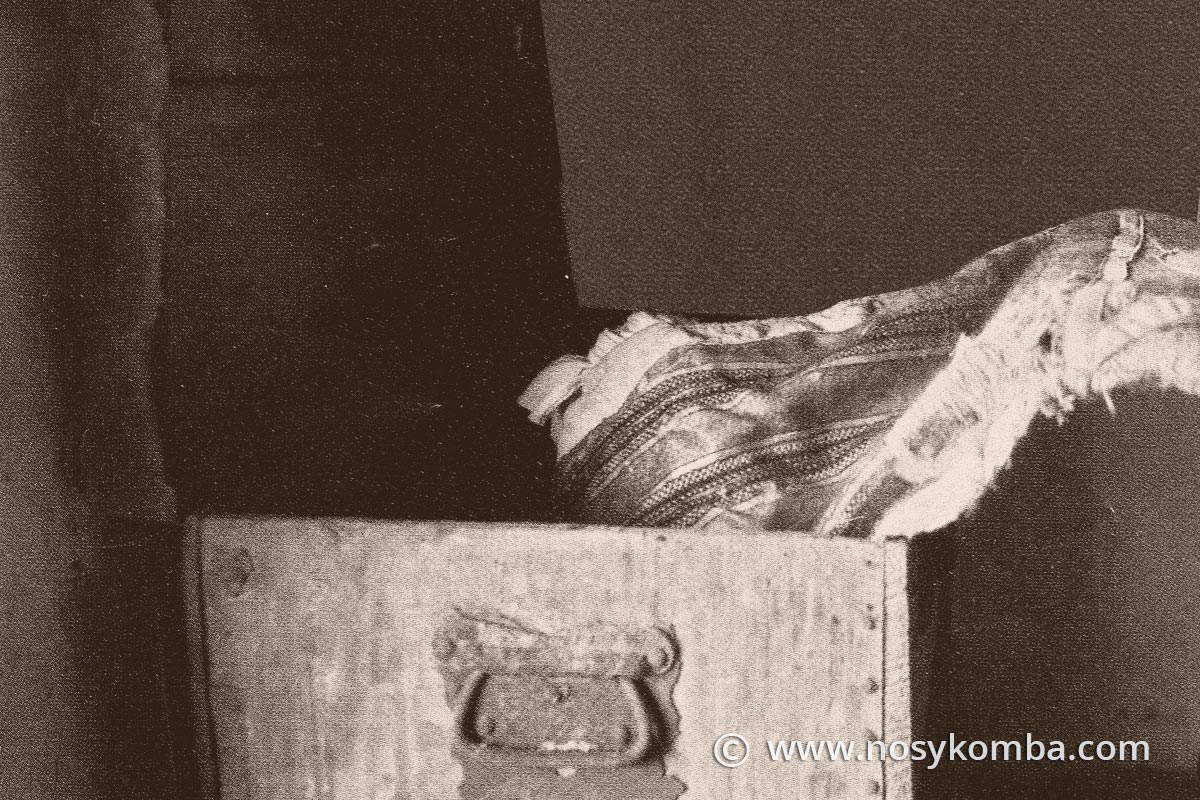
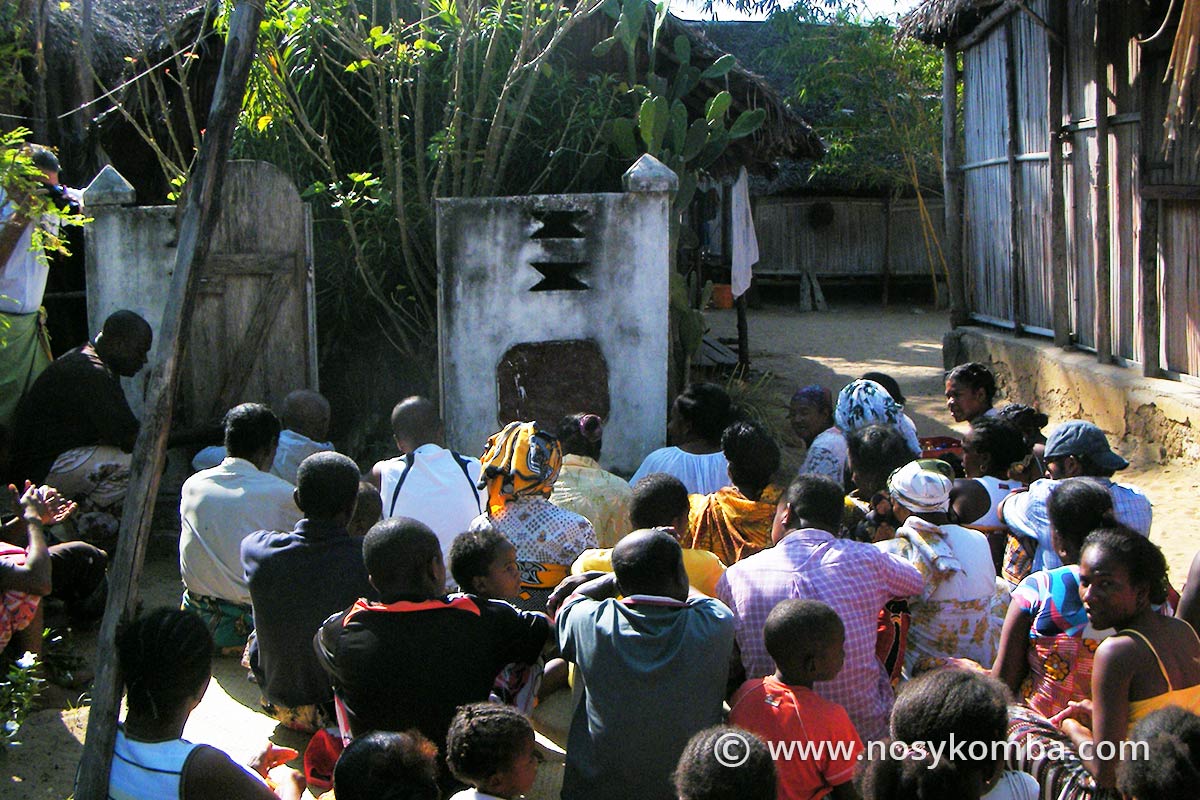
In Antamotamo, a village of dugout builders located east of Nosy Komba, King Yaya honors his ancestors from the Zafiny Mena lineage.
In Ampangorina, Queen Vola, a descendant of the Zafiny Fotsy lineage, and René, the manantany “prime minister”, work to honor the ancestors. The royal house is located in the west of the village, where there is a chest that protects the relics of time. It is only during the ceremonies that they take out the striped lambas.
Zafiny Mena and Zafiny Fotsy
The Zafiny Mena and the Zafiny Fotsy are families of kings and queens. Zafiny Fotsy means “descendants of the silver lineage”, and Zafiny Mena “descendants of the golden lineage”.
In the royal hierarchy, the Zafiny Mena have a privileged title compared to the Zafiny Fotsy.
When a Zafiny Mena person dies, he or she is wrapped in a red shroud, a color called “mena” in Malagasy, symbolizing gold.
Rituals and fady
Among the many rituals, there is the zebu sacrifice. Before the killing, the ancestors are invoked: this is the cold invocation. Then comes the hot invocation when the cooked meat is offered. Zebu meat symbolises the body of the deceased during funeral ceremonies.
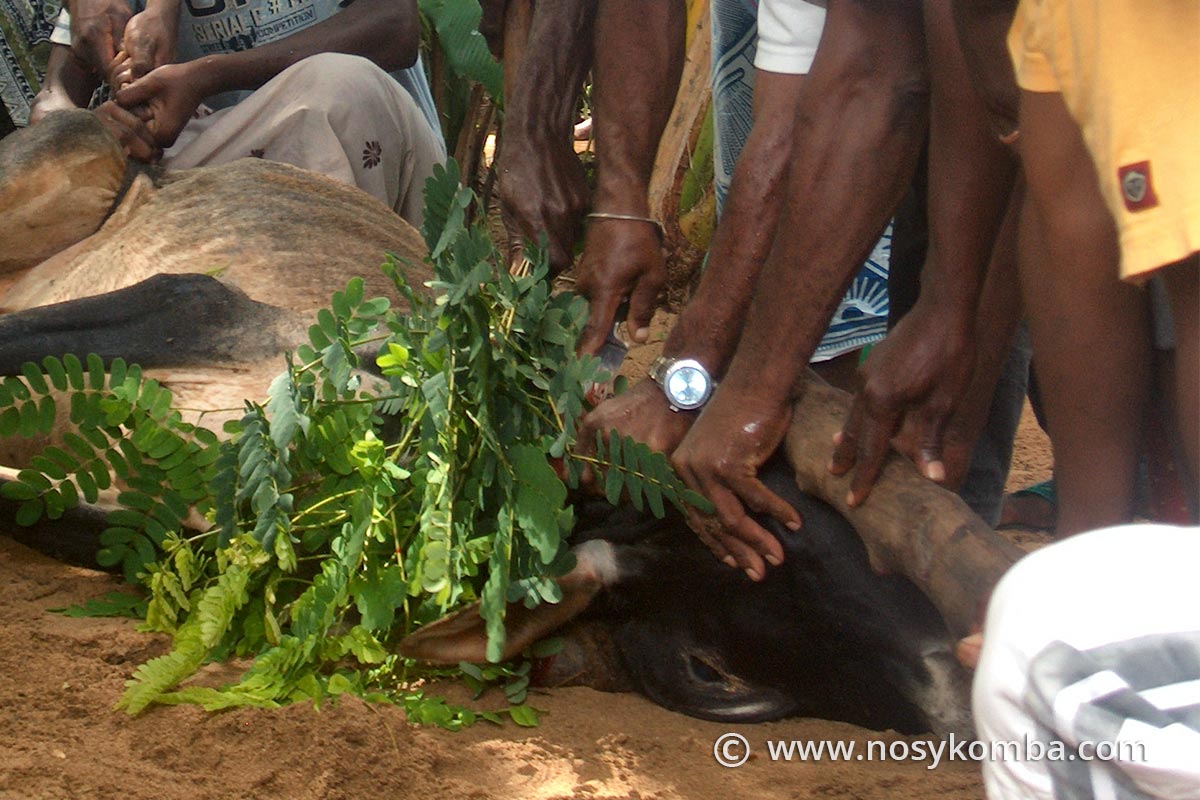
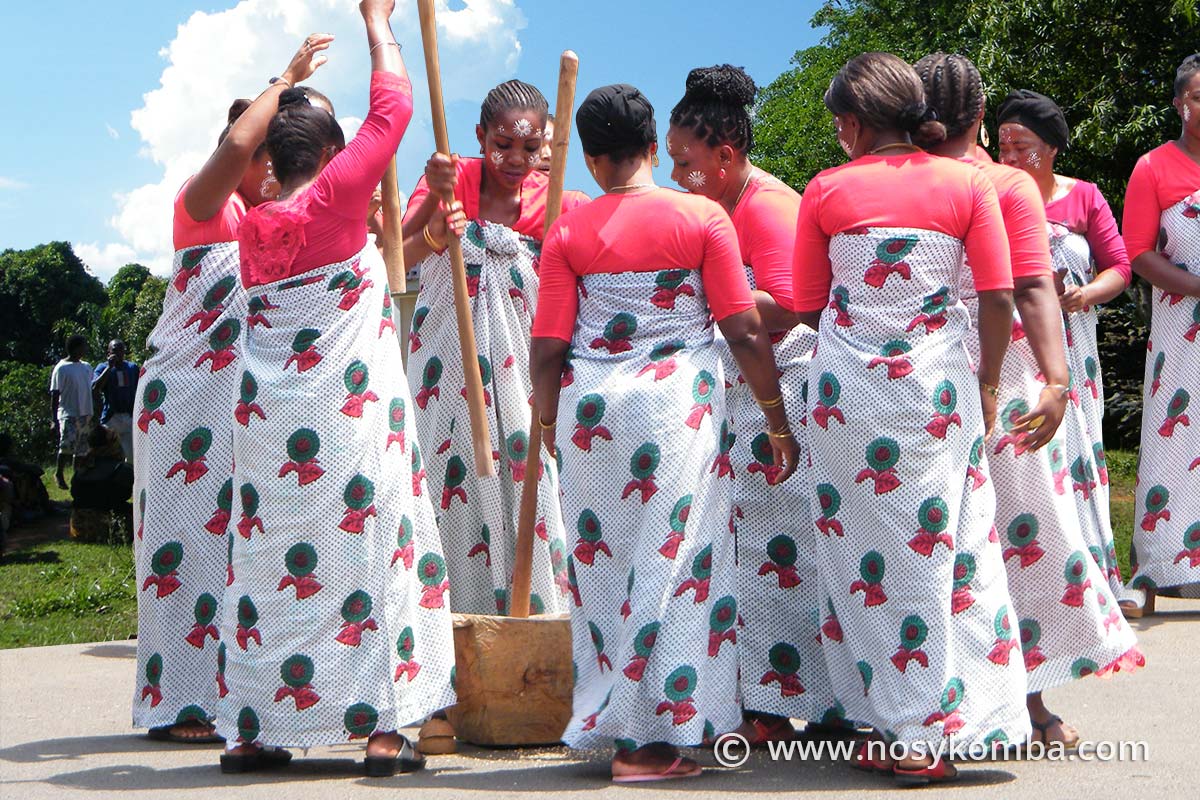
Traditional ceremonies
Traditional ceremonies are very important for the inhabitants of Nosy Komba.
Among them, there is the Mamositry, linked to the circumcision of boys. During the operation, a special cloth is used; the blood must not flow on the ground. A feast is held a week after the circumcision, where zebu, killed for the occasion, is eaten and musicians are invited.
Another ceremony, reserved for the Ampanjaka (kings and queens), takes place every three months. The courtyard in front of the royal house is cleaned in order to receive the sovereigns who gather to feast. Two women and two men are invited to join them. The ceremony begins in the evening and ends the following afternoon. It may be held only from Friday to Saturday, or from Sunday to Monday. Women who are menstruating cannot attend.
Sometimes the Ampanjàka also have a celebration when their children’s hair is cut.
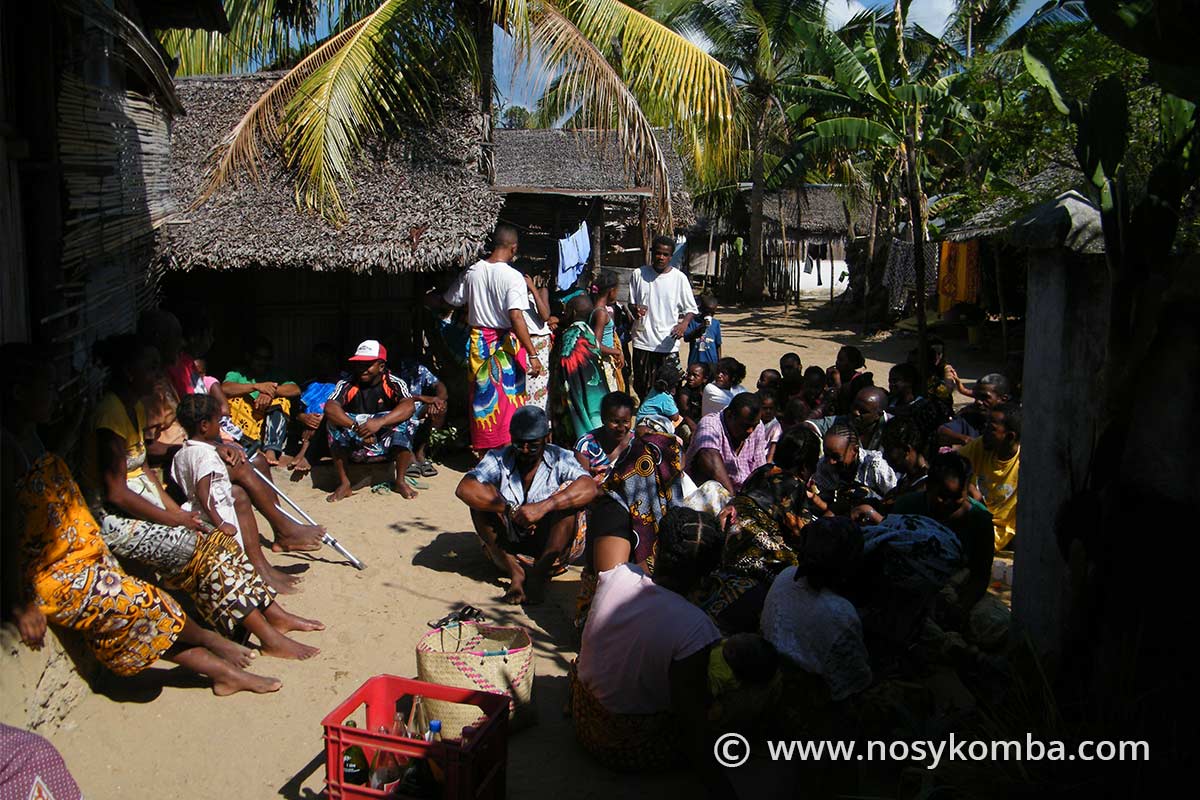
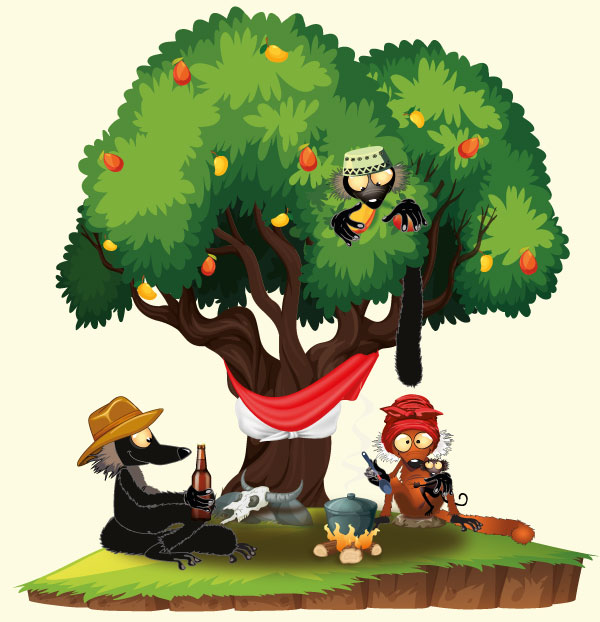
The Jôro
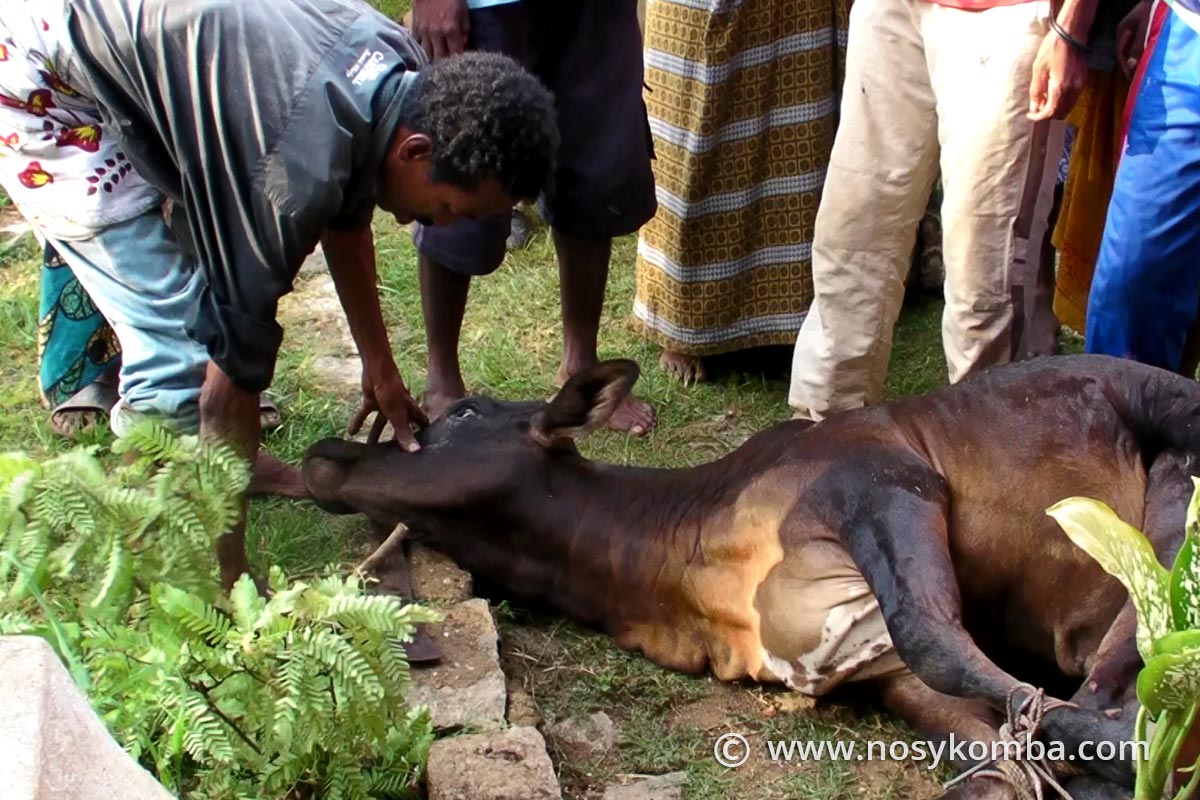
Each villager is free to organize a jôro, and usually everyone is invited.
When a jôro takes place, it is spread over two days, from Friday to Saturday.
The party starts on Friday afternoon, with the villagers coming together to share joyful discussions, dances, and songs, while clapping their hands to the rhythm of traditional music, over a drink. The women often have their hair down and each person wears a lambahoany.
The festival continues until the next day when everyone bathes in the sea and washes up, before coming together to sacrifice an “aomby”, a zebu.
One person is designated to hold the tail of the zebu while others tie up the animal to prevent it from moving. The zebu is then laid on the ground and washed, starting with the head and ending with the tail. Everyone takes out a silver note and rubs it against the animal’s body for good luck. An initiated man cuts off the head of the aomby, which will be placed in a sacred tree.
Tromba
Although different religious cults are practiced on the island, and this in a harmonious way, the Malagasy remain attached to their ancestral rites. They live their incarnation in close connection with the kingdom of the spirits. Hence their deep respect for the ancestors.
The body is never dissociated from the soul. Intuition and feelings are omnipresent in their individual functioning.
Also, it frequently happens that the spirit of an ancestor invites itself into the body of a possessed person, who enters a trance: this is the Tromba.
Burials

